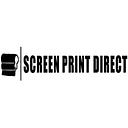A Comprehensive Guide to Screen Printing Equipment
If achieving a clean and sharp print is your goal, having the right screen printing equipment is crucial. In this guide, we’ll delve into each component of screen printing machinery, outlining their functions in the printing process.
Screen Printing Press:
While it’s possible to screen print with just a mesh screen and a squeegee, many opt for a press for more efficient printing. The press holds the screen in place between prints, facilitating easy switching of items being printed. There are three types: manual, semi-automatic, and automatic. The choice depends on the volume of printing required, with larger-scale operations favoring semi- or fully automated presses.
Inks:
Choosing the right ink goes beyond color selection. Specialty inks like glittery, texturized, or smoke inks can create unique finishes. Consideration for the material being printed is essential, as certain inks work better on specific materials. For garments, machine-washable inks are commonly used, providing durability through heat treatment.
Silkscreen:
In T-shirt screen printing machines, the silkscreen is a frame with mesh material, traditionally silk but now often polyester. Mesh thickness and thread count can be tailored for different textures or materials. Once coated and exposed, the screen serves as a pattern and can be washed and reused after the printing process.
Squeegee:
The squeegee, a rubber blade on a handle, is used to press ink through the mesh screen onto the printed surface. Choosing the right squeegee size and rubber blade hardness depends on the design’s complexity, ensuring even ink distribution.
Washing Station:
Screens need to be washed after use to remove emulsion traces for reuse. This can be done with special cleaning liquid, acid baths, or simply water troughs and power hoses.
FAQs:
Will screen printing ink rinse?
Properly screened garments with heat-treated washable ink should not fade. Following the manufacturer’s instructions for ink drying temperature and time is crucial for a durable, washable product.
Screen Printing vs. Digital Printing:
Digital printing (DTG) uses a fabric printer similar to an inkjet printer for direct image transfer onto fabric, allowing for detailed and colorful designs. Unlike screen printing, digital printing requires minimal setup, making it cost-effective for smaller batches.
Silkscreen Printing vs. Heat Transfer:
Heat transfer printing uses heat to bind a design to fabric, offering ease and affordability. It’s ideal for smaller batches and detailed designs, providing results on challenging items like bags and hats. Combining heat transfer with digital techniques can yield versatile outcomes. However, quality may vary based on materials and printing methods.
In conclusion, understanding the nuances of each screen printing equipment component is crucial for achieving optimal results in your printing endeavors.
